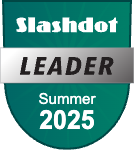This article is part of Beyond the Prompt — a campaign exploring Creativity and AI through the voices of industry leaders. Discover more stories, educational content, and our Shortest AI Film competition on the full campaign page.
For as long as I can remember, my creative practice has been driven by curiosity. I’ve never limited myself to one tool or medium and have always been fascinated by how technology can serve creation. Long before AI became a thing, I was experimenting with web design, interactive installations, I played around with unity 3D, augmented reality, etc,… I didn’t chase becoming an expert in any of these. In fact, I deliberately avoid that. I believe the freshest ideas come when you approach something with a fresh and innocent eye and no rigid expectations.
So when AI image generation started gaining momentum, it felt less like a sudden shift and more like a natural next step. I didn’t have a grand plan to ‘add AI’ to my process, it just happened naturally. New technology appears, I get curious, I see what it can do with it. That’s how I met AI.
At first, it was about exploration. I tried different models, pushed their limits, and quickly realized AI wasn’t just another tool, but it’s a collaborator with its own biases, limitations, and surprises. Each AI model is trained on a specific dataset, and those datasets rarely reflect the full diversity of human identity, which is a big focus in my work. When generating images, you start to notice patterns: similar faces, similar aesthetics, and embedded stereotypes about gender, beauty, and ethnicity. This made me more conscious of its limits and how I've learned how to build new workflows to push those limits.

But what excites me most about AI is its unpredictability. The way it can generate visual concepts you would never think of on your own. It’s like having a creative partner who sometimes understands your vision and other times takes it somewhere totally unexpected. Some AI models I use for concept development, others for final production, depending on their strengths and weaknesses. It’s about finding the right collaborator for each phase of a project.

Of course, not everything works. There have been moments when an idea was meant to be executed with AI, but the results didn’t feel right. In those cases, I’ve gone back to photography, CGI, or hands-on physical processes. It’s not about forcing AI into every project, but about knowing when and how it makes sense.
At PATIO, the creative studio I co-founded, we embrace this hybrid approach. We combine AI, photography, and digital art to craft images and narratives with intention. Our focus isn’t on making ‘AI art’, but it’s about using whatever tools best serve the concept.

Looking ahead, I’m curious to see how AI continues to shape the way we perceive identity, beauty, and digital culture. But one thing’s certain: while AI-generated images flood our feeds, the real value will lie in work that feels personal, crafted, and thoughtful. And for me, that means staying curious, mixing tools, and letting experimentation lead the way.
Learn more aboutJohanna Jaskowska here.


















.png)







